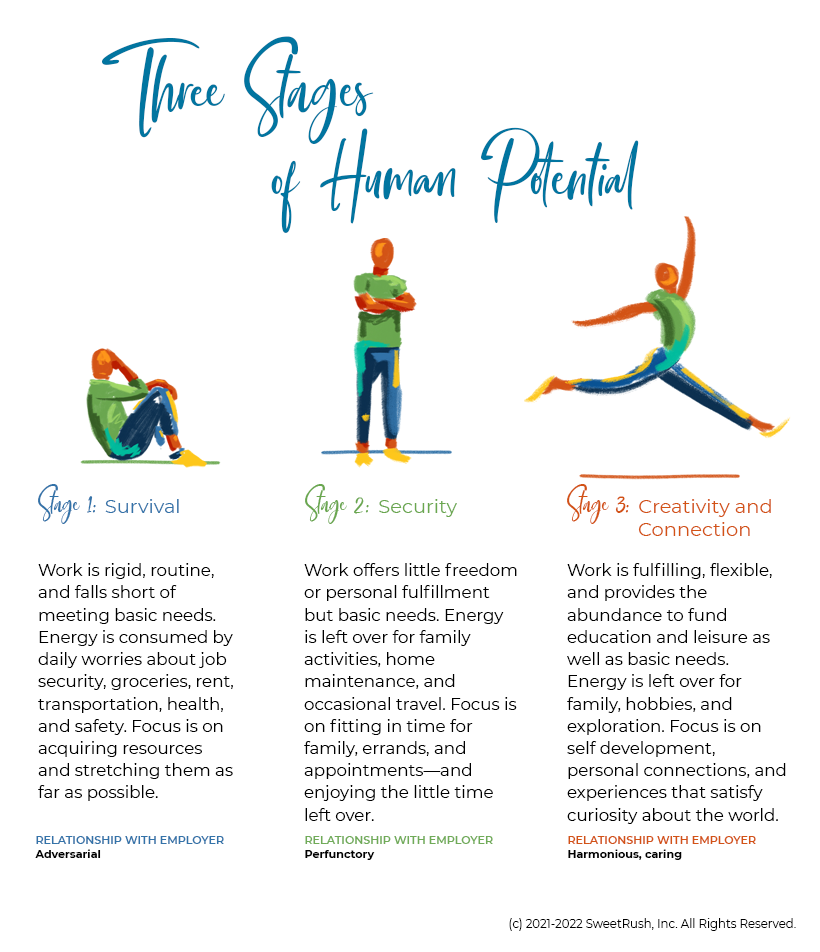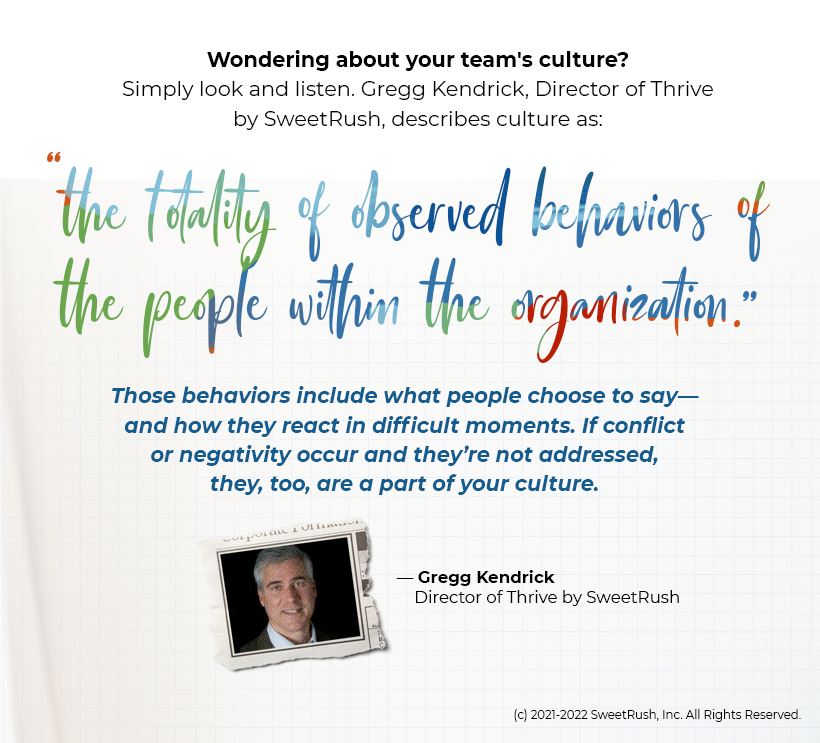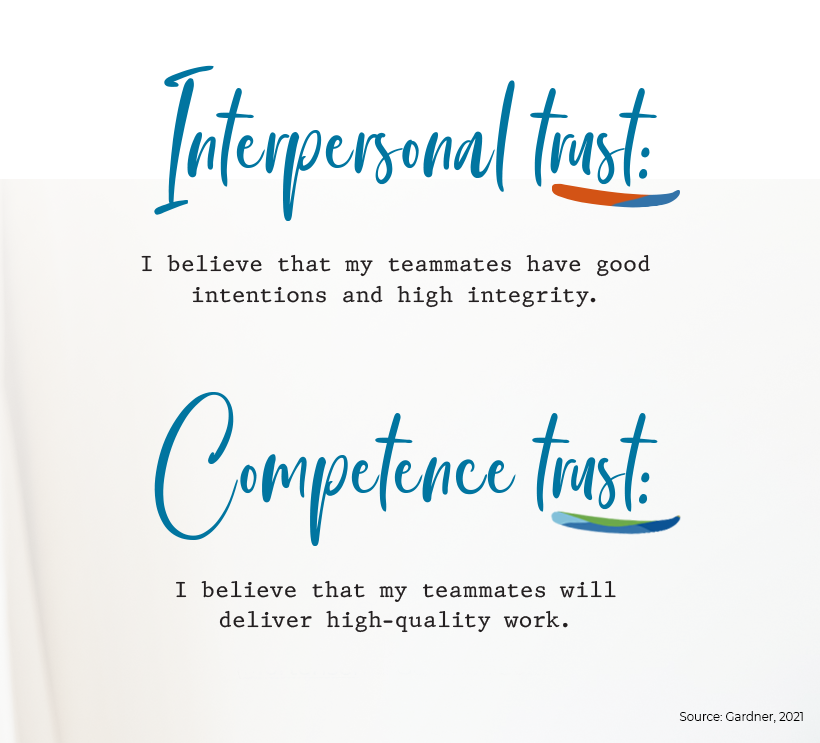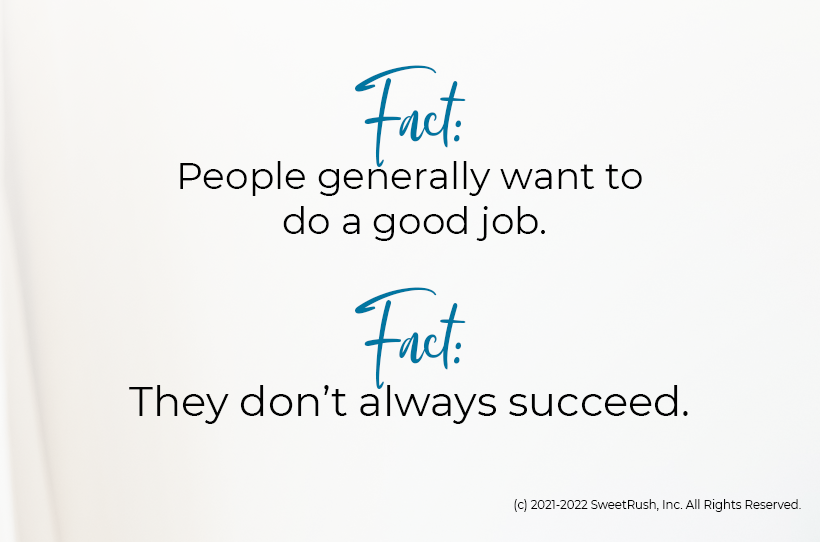You might say we’re at a collective Rubicon right now, with thousands of leaders crunching the numbers and seeing the business value of meeting their employees’ fundamental human needs and helping them grow their potential. We call these organizations human-centered organizations.
We love seeing more and more leaders steer their businesses in this direction! To light their way, we’ve been sharing our experiences in building a human-centered organization with compensation, policies, and procedures that provide abundance for our people and help them reach their full potential. (Want in? Check out Chapter 1 of our eBook.)
For organizations and roles that have the option, we firmly believe that virtual work is the human-centered choice. We’ve been 100% remote—and thriving!—since 2009, and our employees savor the time recovered from commuting. (See below for a snapshot of how our team members have reclaimed that time.)

The result: renewed, refreshed employees who log on ready for collaboration, creation, and new challenges.
Not seeing this side of your people? They’re probably going through a stage. And you can help them through it with great virtual management skills that help them grow into their full potential.
Human Potential: We’re All Going Through a Stage
Like much of life, human potential can be measured in stages. We’re social science buffs, so we’ve been inspired by Maslow’s hierarchy of needs; Graves, Beck, and Cowan’s Spiral Dynamics; and Kohlberg’s stages of moral development. All of these models speak to how meeting people’s fundamental needs helps them develop to their full moral, intellectual, and creative potential.
What does that mean for the workplace?
Essentially, when employees are freed from existential concerns—safety and security, for example—they have the energy and bandwidth to immerse themselves in their craft, grow, and innovate. If they’re stuck in survival mode, they can’t engage in this deep work.
We’ve simplified these models into three stages of human potential. Remote work is just one part of what we call Stage 3. Stage 3 is characterized by creativity, connection, and a harmonious relationship with supervisors and peers.
Not sure where your employees fit? Tune in to the tone of your next team call. Are your people guarded and curt or expansive and open? How do they talk about their time away? What hobbies do they have?
If they don’t say much, consider why not. Is their salary enough to support their interests—and basic needs? Are you rigid about where and when your employees work? Do your employees trust you with personal information?

The Virtual Management Opportunity
Your employees’ daily interactions with you and their peers can make or break their quality of life at work and their ability to reach their potential. And—no pressure!—managers have an outsized impact upon how the entire team behaves and interacts.
The sum of those behaviors is what we talk about when we refer to team culture. Gregg Kendrick, Director of Thrive by SweetRush, adds, “Those behaviors include what people choose to say—and how they react in difficult moments. If conflict or negativity occur and they’re not addressed, they, too, are a part of your culture.”
In other words, culture is everything you do—and everything you don’t do.

Where’s a virtual manager to start?
We’re so glad you asked! Here are a few virtual management mindsets and practices that have made our 20-year experiment in remote work a success.
Managing Better: Virtually
Trust
Trust is a key element in remote work, both among colleagues and between managers and their teams. A study by Heidi K. Gardner identified two essential types of trust for effective remote teamwork (cited in Mortensen & Gardner, 2021):

(Gardner, 2021)
Trust is a two-way street; it’s also the path to the other virtual management mindsets and practices. Trust is also a direct route to psychological safety—a fundamental human need.
Assume Positive Intent
We’ve said it before, but it’s important enough to repeat—and to be a foundational step in our Emotional Resilience Challenge!
As you engage your employees, assume the best. Whatever makes the person tick, their modes of interaction are not about you, directed at you, or used with malicious intent.
As Linda, our COO, reminds us, we need to trust that everyone is doing their best. We don’t know what Stage 1 worries the person might have or what else is competing for their attention. In fact, if we knew what they were going through, we might be impressed by how well they’re performing under pressure.

Offer Autonomy
Here’s where you build on that foundation of positive intent. You’ve got great people; now let them figure out when and how to do their jobs.
Autonomy is a huge part of a Stage 3 life. Trust your employees to set their own schedule, deliver projects, and manage client relationships—and you’ll get better results.
Remember that two-way street? Extending this trust to your people means that they’ll reciprocate: You’ll hear from them when there’s an issue—and while there’s still time to repair it.
Clear the Pebbles
Trusting your team frees you up to spend your energy more productively. One of the biggest values you can add is by removing external barriers to your employees’ work. Whether they need access rights, different tools, or a forum to share their work, you can use your influence to get them what they need.
These don’t need to be major, either—ask your people about the “tiny, incremental, irritating, and painful stuff at work that can wear [them] down” over the course of the day. Social psychologist Christina Maslach describes these as “pebbles” that gradually accumulate and contribute to burnout (Harvard Business Review, 2019).
Removing the pebbles (and boulders) that inhibit them helps your employees focus on their biggest value-add: reaching their potential through the practice of their craft.

Find the Root Cause
Fact: People generally want to do a good job.
Fact: They don’t always succeed.
These two facts are not mutually exclusive—and they’re not a cause to withdraw trust. When an employee performs poorly, there’s probably more to the story. If they trust you not to penalize them for mistakes, they’ll come to you first. For example, if an employee can admit to you that they were short with a client after an all-nighter with an ill parent, you can preempt that angry call and de-escalate the situation.
If an employee doesn’t feel safe, they’ll hide any missteps—and appear irresponsible. That’s a vicious cycle: If you view them as irresponsible, you’ll begin to treat them differently. In turn, they’ll feel less safe and hide even more.
The bottom line: Assume that employees mean well even when they don’t perform well. Start the coaching conversation with “How are you?” and follow that up with “How are you really?” Keep in mind that Stage 1 stress takes higher-order thinking off the table—and plan together accordingly. You’ll avoid the need for after-the-fact damage control. (Want to keep your coaching conversations on message? Try these feedback mad libs.)
Managing the Change
If, like so many of us, your management practice began in a face-to-face office setting, the adjustment to virtual management may feel uncomfortable at best. Trusting people you can’t see—and might never have met in person—may feel counterintuitive.
We’d still encourage you to take the risk—and trust your employees more than might feel comfortable. After all, most people want to do well. Protecting yourself from the few who don’t is a waste of energy: It harms your relationships with your team and detracts from the psychological safety that helps us all reach our full human potential. Let Manage as if you’ve never been burned be your guiding principle.
Of course, you need to know that you have the right people for the job. (Check out some tips and resources from our Talent Management team on recruiting the best people—virtually!) Once the right people are in place, extending trust is the best way to elicit trustworthy behavior and high-quality work from your team.
Curious about more virtual management practices that help your people reach their full human potential? Check out our eBook, It’s All About Your People!: Embracing Human-Centered Business, Workplace Culture, and Learning Design. You’ll find plenty of lessons from our two decades as a human-centered organization—and decade-plus as a fully remote team.




